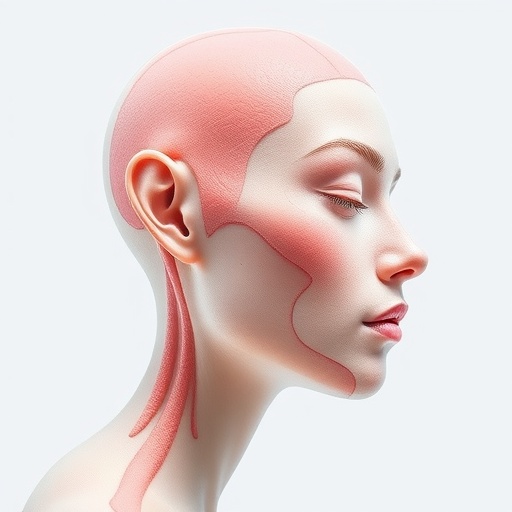In the realm of regenerative medicine, the pursuit of effective skin substitutes has gained momentum over the last few decades. This innovative field bridges the gap between traditional healing processes and advanced technological applications. Recent advancements in material science and bioprinting have provided novel avenues for skin repair, offering hope for patients suffering from severe skin injuries and chronic wounds. As we delve into the intricacies of these revolutionary techniques, a broader understanding of their implications on healthcare systems and patient outcomes becomes increasingly evident.
The conventional methods of skin grafting and substitute technologies have significantly evolved, yet they often come with limitations such as donor site morbidity, immunological rejection, and variable outcomes. These challenges emphasize the necessity for innovative approaches that can not only replicate the structural and functional characteristics of human skin but also overcome the inherent limitations of conventional grafts. The introduction of synthetic and biological materials aimed at mimicking skin has opened up a new frontier in the treatment of wounds; however, the successful implementation of these alternatives remains a challenge.
3D bioprinting represents a groundbreaking solution for creating skin substitutes. This technology allows for the layer-by-layer deposition of living cells and biomaterials, thereby facilitating the fabrication of complex, three-dimensional skin structures. Bioprinted skin can be customized to match the patient’s own unique skin characteristics, potentially reducing the likelihood of rejection and enhancing the overall healing process. The ability to integrate different types of cells, growth factors, and extracellular matrix components into the printed constructs paves the way for the production of skin models that closely resemble natural skin.
The use of 3D bioprinting in developing skin substitutes offers several advantages over traditional methods. For one, it significantly reduces the time required for constructing skin models. Moreover, the precision of bioprinting allows for the fabrication of skin tissues with specific architectural configurations, promoting better integration into the host tissue. The technology also holds the potential for the scalability of production. As the demand for skin replacements continues to rise, 3D bioprinting could provide a readily available solution to meet these growing needs.
In addition to its practical benefits, this advanced technology aligns strategically with the fast-paced advancements in nanotechnology and material science. Researchers are actively exploring various biocompatible materials that can support cell viability and enhance the overall functionality of engineered skin. Hydrogels, for instance, have emerged as a promising scaffold material due to their ability to retain moisture and provide a conducive environment for cell growth. Encapsulating cells in hydrogels can help recreate the mechanical properties of skin, ensuring that the bioprinted constructs mimic the natural tissue more closely.
Furthermore, the integration of growth factors and bioactive molecules into the bioprinted skin can expedite the healing process by promoting cellular migration and proliferation. This multidimensional approach not only enhances the structural integrity of the artificial skin but also optimizes its regenerative capabilities, making it a viable alternative to conventional skin grafts.
However, the journey to widespread clinical application of 3D bioprinted skin substitutes is fraught with challenges. The reproducibility of printed tissues and the long-term viability of the implanted constructs remain critical concerns. Researchers are diligently working to establish standardized protocols that will address these issues, ensuring that the bioprinted skin can provide safe and effective treatment for patients. Additionally, regulatory pathways for approving new bioprinted constructs are still being developed, which may impact the pace of integration into clinical practice.
Despite these hurdles, the future of skin substitutes is bright. Ongoing studies and clinical trials are providing valuable insights into optimizing bioprinting processes, allowing scientists to refine their techniques and understand the complex cellular interactions that occur within engineered tissues. Collaboration among interdisciplinary teams comprising engineers, biologists, and clinicians is vital to accelerate the translation of these innovations from the lab to the bedside.
As awareness and acceptance of bioprinted skin substitutes grow, potential applications expand beyond burn treatment and wound healing. There is also interest in creating personalized skin models for pharmaceutical testing and cosmetic applications, offering an ethical alternative to animal testing and enabling more precise product development. The versatility of 3D bioprinting technology positions it as a cornerstone in the future of both regenerative medicine and tissue engineering.
In conclusion, the transition from conventional skin substitutes to innovative 3D bioprinting technologies highlights a significant advancement in medical science. This evolution not only embodies the promise of healing but also raises extraordinary expectations for improved patient outcomes. As this field continues to evolve, it represents a leap towards the realization of fully functional artificial skin that can not only replace but also enhance human tissue in unimaginable ways.
As researchers continue their pursuit of knowledge and innovation, the hope is that these advancements will soon become standard care practices, providing patients with effective solutions while overcoming the limitations of traditional methods. The road ahead may be complex, yet the commitment to pushing the boundaries of what is possible in skin regeneration underscores the field’s dynamic nature and its potential to transform lives.
Subject of Research: Skin substitutes and the transition to 3D bioprinting technologies.
Article Title: Skin substitutes: from conventional to 3D bioprinting.
Article References: Deepa, C., Bhatt, A. Skin substitutes: from conventional to 3D bioprinting. J Artif Organs 28, 154–170 (2025). https://doi.org/10.1007/s10047-024-01481-9
Image Credits: AI Generated
DOI: https://doi.org/10.1007/s10047-024-01481-9
Keywords: 3D bioprinting, skin substitutes, regenerative medicine, synthetic skin, hydrogels, advanced biomaterials, personalized medicine, tissue engineering, clinical applications.




